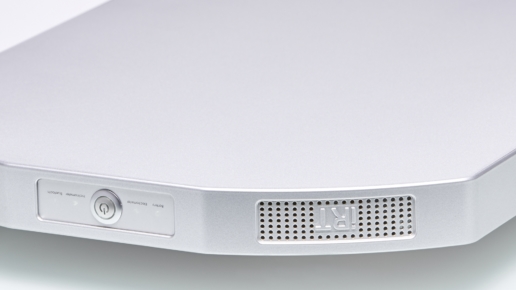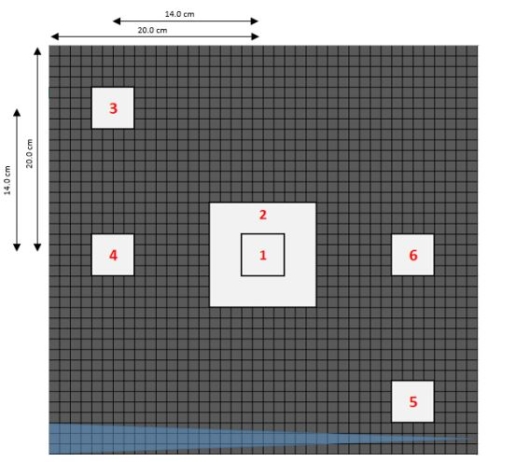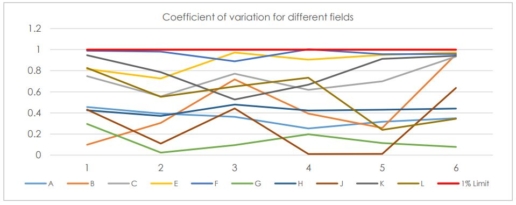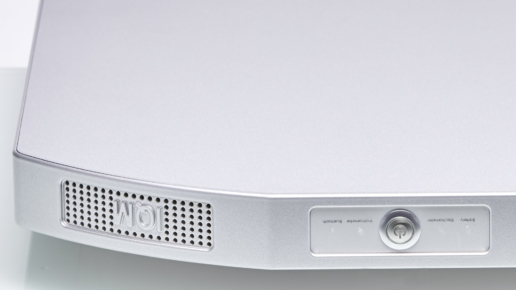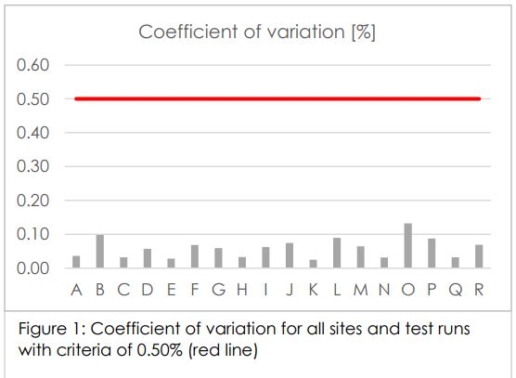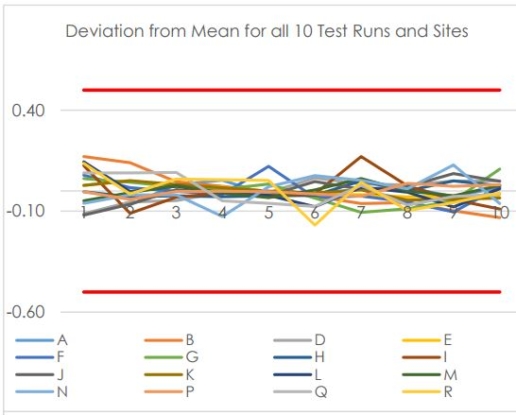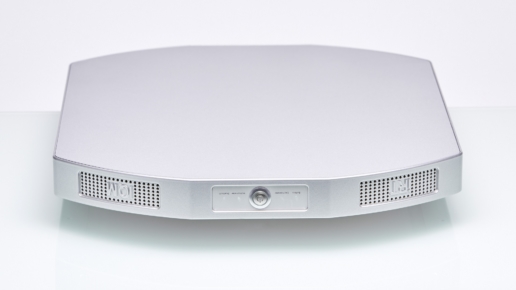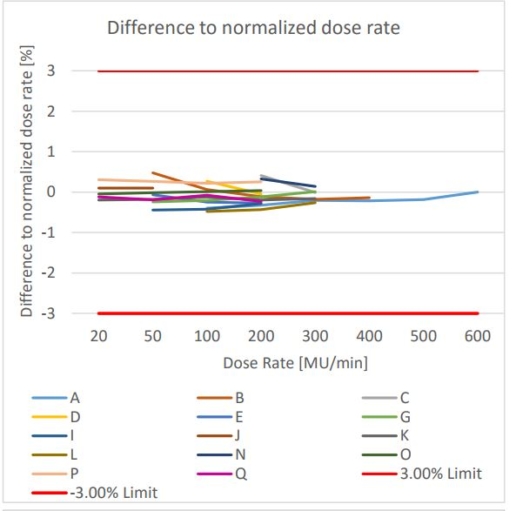Long-term signal reproducibility
Test purpose
This test verifies the IQM detector’s capability to measure the same signal when the same beam is repeated multiple times over a longer period.
Test method
A group of 10 research partner sites ran six different fields for a 6MV photon beam delivering 100 MUs. The fields used are a centered 10 cm x 10 cm field and five 4 cm x 4 cm fields (defined by MLC and Jaws). The distribution of the segment openings is shown in the figure below. The fields were chosen to ensure the reproducibility of the signal for different field sizes and positions. Passing criteria for the test was that the variation of the measured signal for every beam segment be 1.00% or less. The research partners were asked to repeat the test on different days over a time period of multiple weeks. 10 beta test sites measured the fields on average 16.3 (2 – 59) times on 6.4 (1 – 19) different days.
Test results
The coefficient of variation for the selected fields varies from 0.01% to 0.99% and the mean variation ranges from 0.13% to 0.96%. For all sites the coefficient of variation is within the criteria of 1%. Figure 4 gives an overview of the variation. The results indicate a variation in the signal, which is due to Linac output variations on different days.
Conclusion
All measurements passed the acceptance criteria for reproducibility, with the
coefficient of variation being 1.00% or less. The results indicate high long term reproducibility.
This test report is based on a publication created by iRT Systems GmbH, Koblenz (Germany).
Please click on the „Download“ button to download the complete publication.
Short-term signal reproducibility
Test purpose
The short-term signal reproducibility test verifies the IQM detector’s capability to measure the same signal when the same beam is repeated multiple times.
Test method
The signal reproducibility test uses the reference field size of 10 cm x 10 cm (defined by MLC and Jaws) for a 6MV photon beam delivering 100 MUs. The test is passed if the variation of the measured signal is 0.50% or less.
Test results
The coefficient of variation (%SD) varies for all sites from 0.03% to 0.13% and is diagrammed in the figure below.
For further analysis the individual deviation from the average for every single test run was investigated. The same pass criteria as for the coefficient of variation (namely 0.50% or less) was applied for the deviation from mean. The results are shown in the figure below. The deviation from mean varies from 0.01% to 0.23% which indicates a small variation for the different test runs.
This is confirmed when inspecting the signal values for all 10 runs at all 18 linear accelerators /sites (in table 2 of the white paper). Within each site, test run results show minimal variation. This small variation is due to tolerances from the IQM (<+/- 0.50%) and slight Linac output variations.
Conclusion
Every IQM installed at each RT department passed the criteria for reproducibility, with a coefficient of variation under 0.50%. The results indicate a high reproducibility with low variation within all 10 test runs for each of the IQM systems installed.
This test report is based on a publication created by iRT Systems GmbH, Koblenz (Germany).
Please click on the „Download“ button to download the complete publication.
Dose rate dependence test
Test purpose
The dose rate dependence test verifies that the IQM System measures the same signal for the same dose independent of the dose rate at which the dose is delivered.
Test method
The dose rate dependence test uses the reference field size of 10 cm x 10 cm (defined by MLC and Jaws) for a 6MV photon beam and a constant dose output of 100 MU. The test was performed for a number of dose rates as available at the specific Linear Accelerator, typically for the following dose rates:
20 MU/min / 50 MU/min / 100 MU/min / 200 MU/min / 400 MU/min / 600 MU/min / (for FFF beams the highest dose rate is also measured).
The pass criteria for the dose dependency test is that the variation between the signal at the highest dose rate and the signal measured at the other dose rates must be less than 0.5%.
Test results
Thirteen (13) of the 21 sites participated in the dose rate dependence test. Because many linear accelerators are limited to deliver only certain, pre-defined dose rates, certain sites have measured at only a few dose rates. Results at each site were normalized to the signal detected at the highest dose rate measured at that site.
The smallest variation with dose rate seen in our results is 0.00%, measured at Site A at 600 MU/min. The largest variation seen was 0.48%, measured at Site B at 50 MU/min. The mean variation over all sites at all dose rates was 0.19%.
Conclusion
The IQM system measures dose independently from the dose rate at which the dose is delivered. The variation in the IQM Signal measured for a given dose delivered at different dose rates are well within our acceptance criteria of +/- 0.5%.
The dose rate dependence test, performed at 13 linear accelerators at research partner sites, confirmed that the IQM signal measured for a given dose does not depend on the dose rate at which that dose is delivered. IQM signal is virtually independent of dose rate.
This test report is based on a publication created by iRT Systems GmbH, Koblenz (Germany).
Please click on the „Download“ button to download the complete publication.
